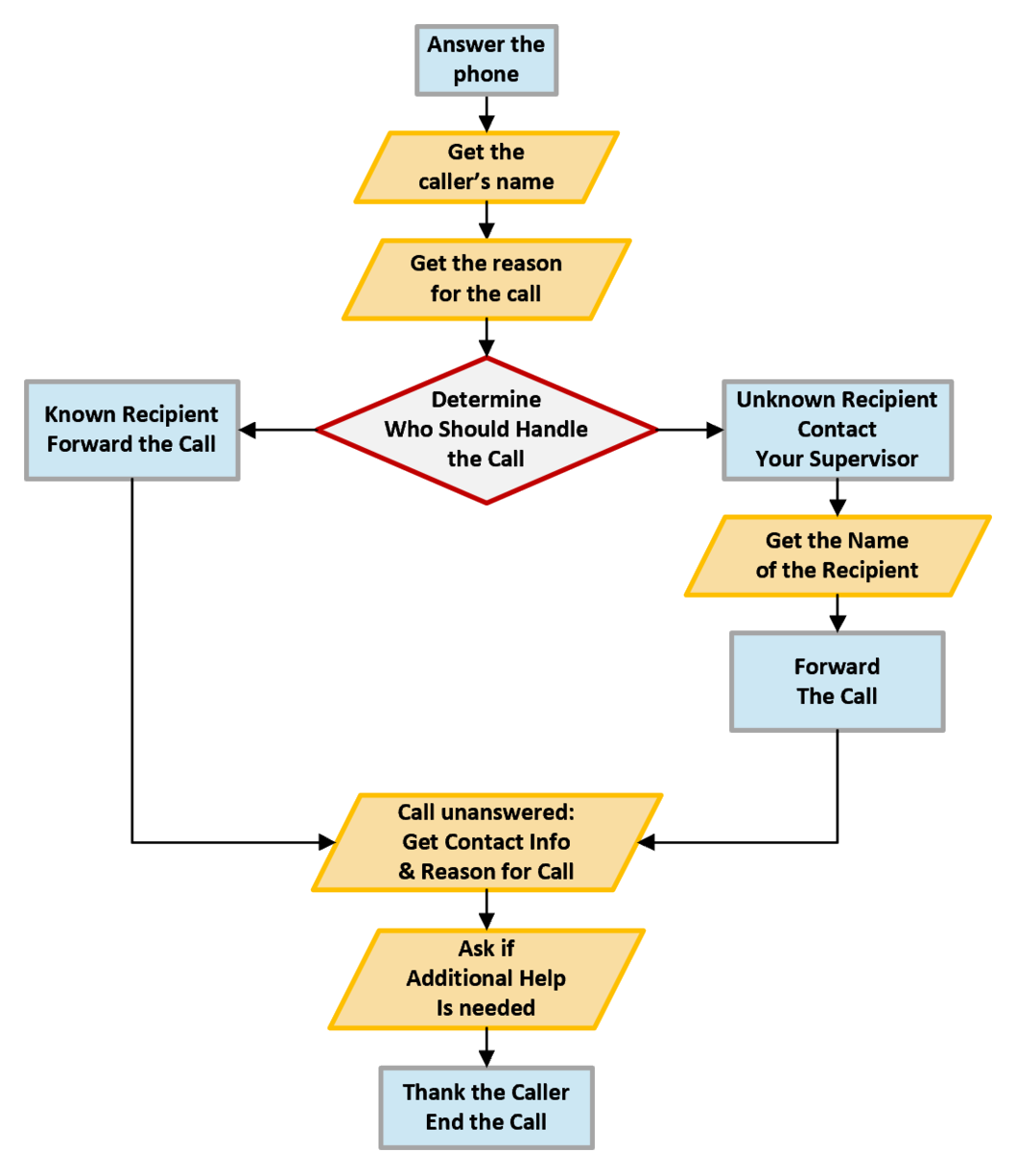
What Is a Workflow?
Tasks and activities are single actions that involve one thing. When two or more actions are required to achieve a desired result, it becomes a process. And when those actions are performed in a specific order, you have a workflow process.
Here is a workflow diagram that explains how one company wants phone calls to be answered and processed.
You have lots of processes in your business, but you may not have thought of them in quite this way. The value of defining and following workflows are many.
- Consistent results
- Reduction / elimination of errors
- Time savings
- Cost reductions
- Improved efficiency
How to Get Started with Workflows

As odd as it may seem, when creating a workflow you start at the end. This may seem counter-intuitive, but it is perfectly logical.
First define your desired outcomes and then determine how to get there.
To do this is, use the time-honored concept for gathering information and solving problems – the five Ws – Who, What, When, Where and Why, to which we also add How.
Once you create a few simple workflows, you will develop an analytical strategy, discover how to streamline processes, and learn to add logic that takes your solutions to the next level – automation.
Types of Workflows
Administrative Workflows

Administrative workflows are used to define how company policies and procedures should be carried out. Typically no information or data acquisition is involved in these workflows. As a result, nothing is generated for analysis, reporting or decision making.
Administrative workflows can be created as a written document, a flowchart, or a combination of the two. If you adopt administrative workflows in your business, you will improve many aspects of your operations over time, but this type of workflow is not the focus of FormsTrackR.
Operational Workflows

Operational workflows deal with the way you carry out the functions that create the products or deliver the services upon which your company or organization is focused. Acquisition of information and data is an essential element of these workflows. When reported and analyzed, the data becomes part of an intelligent decision-making process.
Mass market software may be industry-specific, but it can lack tools that you need. Alternatively, an included tool might not function in the way you operate your business. In either case, FormsTrackR is an add-on system that can fill those gaps.
The Bottom Line
When you formalize a workflow, you set up your organization for success by creating a repeatable process for staff to follow. You also set expectations for a repeatable and desirable customer experience.
With its robust set of tools, FormsTrackR puts the power of workflows in your hands. Now you can add the tools you have been missing through a user-friendly dynamic platform specifically designed to help you improve the way you do business.